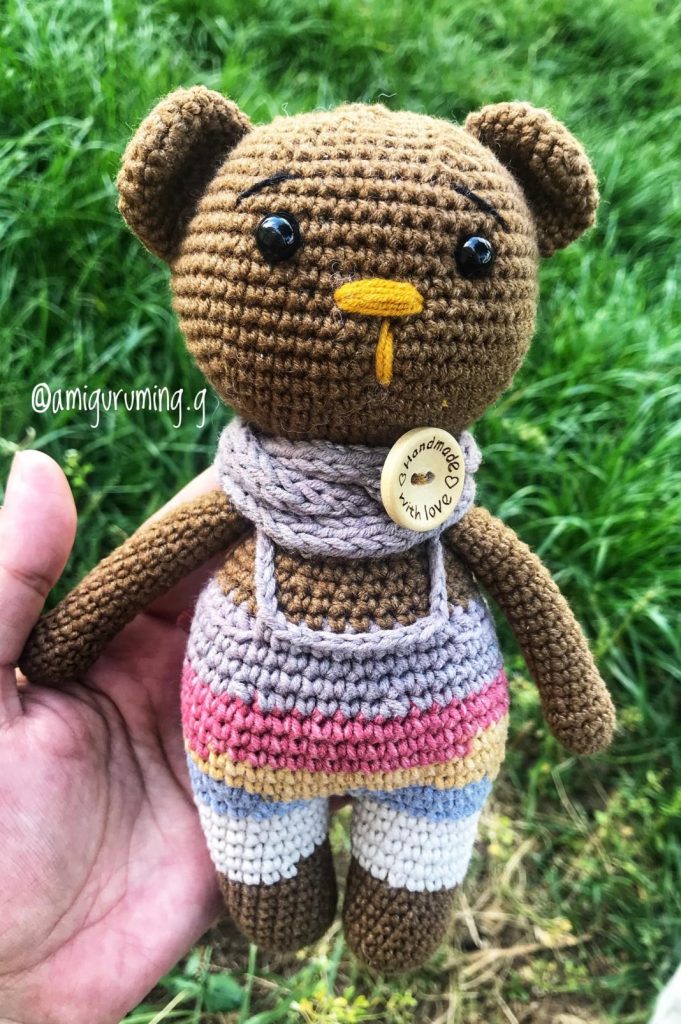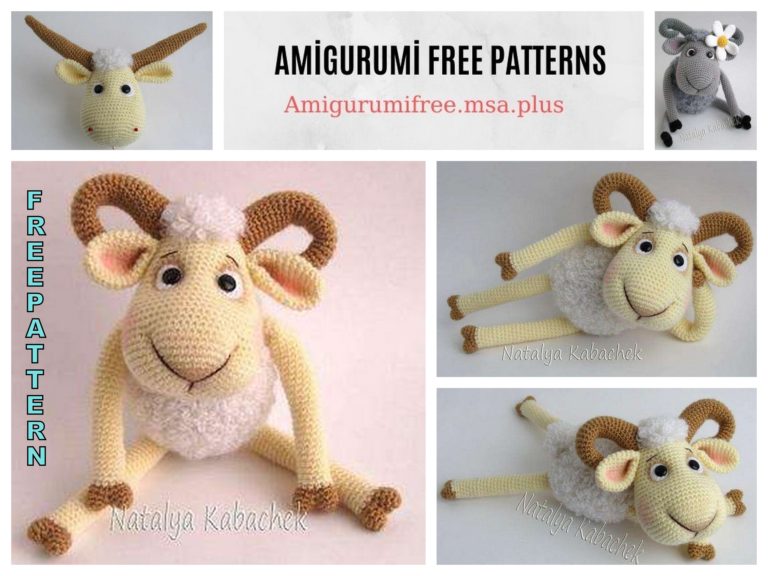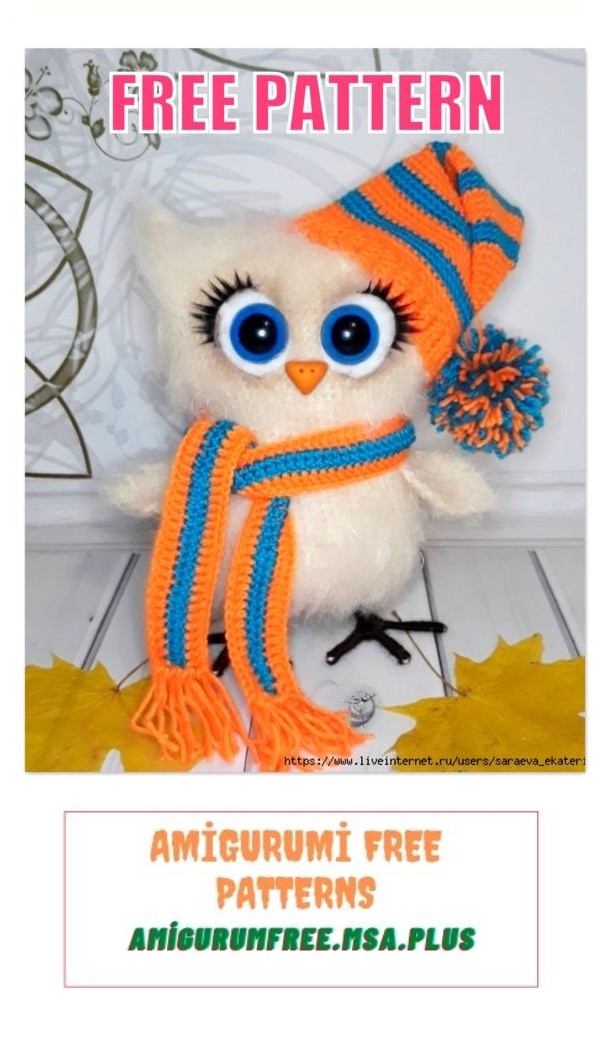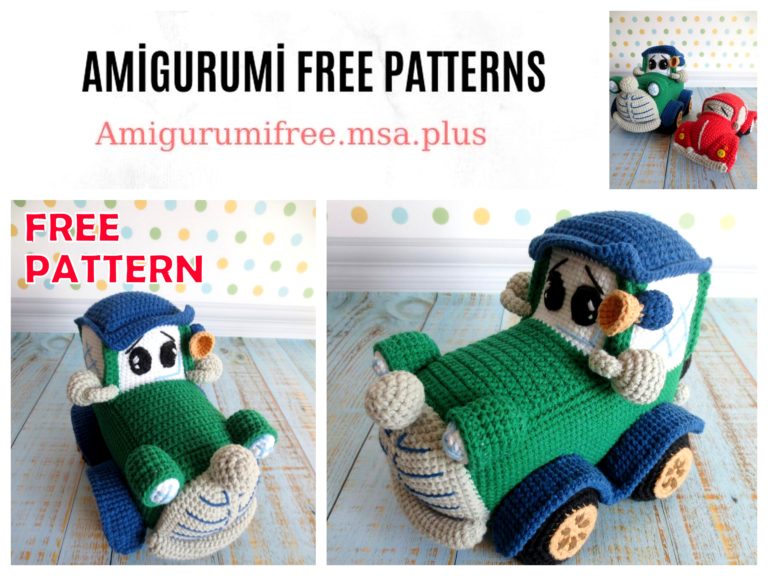Amigurumi Curly Hair Doll Free Crochet Pattern
Pinterest Offical Page : Amigurumfree.msa.plus
Facebook Group: Amigurumi Free Patterns
Facebook Offical Page: Amigurumfree.msa.plus
1) the basis for the body is PELICAN VITA cotton 50g / 330m. COLOR 3976. Or another cotton with the same
footage.
2) shoes and shorts I also recommend using a thread of the same texture as for the body, i.e.
PELICAN VITA cotton 50g / 330m. In your chosen color scheme. Cotton from Rose is also suitable
Kirovskaya.
3) hair KAMTEX KARAKUL STRETCH 100gr / 145m. Or other yarn. Any.
4) strong sewing thread in the color of the base, I use the thread for jeans.
5) filler syntepuh.
6) adhesive tape for wrapping the frame: on a polymer basis and on a paper basis – thin.
Width 1 cm. For the manufacture of eyes we use a tissue-based adhesive plaster with a shallow
structure (not silk)
7) wire for 1 mm steel frame.
If you use braided wire, 1.5 cm is acceptable.
8) glue crystal moment, glue second gel.
9) for tinting dry pastels
10) synthetic brushes number 1 and 2 for eye decoration. For tinting we use hard brushes.
11) three colors of acrylic paints: white, black and iris color as desired.
12) acrylic primer
13) acrylic varnish.
14) the granulate will be used iron, small, to weight the shoes.
1) The most important comment here is the hook 0.9
2) a ruler for determining the size of the spokes is used as a template for the preparation of the eyes.
3) small pliers or pliers
4) I use nail clippers to grab the needle in difficult places.
5) one knitting needle 2.5
6) a stick for sushi or another for stuffing the workpiece.
7) needles: beaded, thin for embroidery eyebrows; plain and darn sewing thick
ch – chain
sc – single crochet
dc – double crochet
hdc – half double crochet
p.shv – buttonhole stitch
dec – decrease
inc – increase
1) 9ch (9)
2) from the second loop 7sc, 3sc into one loop, (*) 6sc, inc. (18)
3) inc, 7sc, inc, 8sc, inc. (21)
4) LEFT: 7sc, 7inc.dc, 2hdc, 5sc. (28)
4) RIGHT: 5sc, 2hdc, 7inc.dc, 7sc. (28)
5) (1sl-st, 1ch. Lift, 1hdc) -all this is knit from the first loop of the 5th row behind the back wall, 27hdc
behind the rear walls, 1sl-st (30) (fixed)
(*) – at this point, I open the bundle from the first air loop.
And in VK there is 5 row in a different way. Which option to knit?
Yes, there are changes, but they are not significant, you can knit an option that seems easier.
6) 29 st. (29)
7) behind the rear walls 27sc, 1dec plain (28)
*(fixed)
8) 9sc, 5dec, 9sc. (23)
9) Back. Rotary rows. 7sc, rotate knitting.
10) knit on the back wall * 2ch. in the second sc * 13sc. (thirteen)
11) * 12sc. (12)
12) * 11sc. (eleven)
13) * 10sc. (10)
Cut the thread, hide it.
• should the top of the boots be a ladder? For some reason I get it
• yes, a small ladder – at the expense of 2ch, this is a kind of lacing. But if knitting is weak and
a short flight of stairs, then you can do 1 ch.
Insoles
1) use 1mm thick cardboard for the base
2) make a template according to the size of the workpiece circled around the perimeter
3) the patterns should be in mirror image i.e. left and right
4) glue the crystal in the heel area on the glue.
1) for the rear walls of the 10th row of the backdrop from 2x pp (ribs) we form 1sc, 1sc into the occupied loop,
2dec, 1sc, 2dec, 1sc into a busy loop, 1sc to be tied from the back of the item. (9)
2) knit on the back walls! 1ch, 2sc, 1dec, 1sc, 1dec, 2sc. (7)
3) (1ch, in the second sc) * 6sc (6)
4) * 5sc (5)
5) * 4sc (4)
4) * 3sc (3)
5) 3sc (3)
Cut the thread, hide it.
We form a frame for the foot
PS we make the segments of the frame:
10 / 11cm – handles – rocker
11cm – leg
18cm – leg
1) knit 14sc from the half-loop of the boot, evenly distributing in a circle. (5sc from heel to tongue, 4sc on tongue, 5 sc from tongue to heel) (9)
2) 2sc, 5dec, 2sc. (9)
3.4) 9sc. (9)
5) 8sc, 1sl-st. (9)
6) we knit 8sc 1sl-st for the back walls. (9)
1) 4ch.
2) from the second loop 2sc, 3sc into one loop (* dissolve the nodule from the first ch), 2sc. (7)
3) 7sc. (7)
4) (we work in one loop: 1sc, 2ch, 1sc in ch, 1sl-st) 6sc. (10)
5) 10sc (10)
6) 10sc (10)
7) 2dec, 2sc, 1dec, 2sc (7)
8-22) 7sc (7)
1) 9st. Loop seam behind the rear walls. (9)
2) 9sc for the rear walls. (9)
3-7) 9sc (9)
8) 6sc, 2incDC, 1sc (11)
Winding a patch to thicken the thigh
9) 6sc, 2dec, 1sc (9)
10-12) 9sc (9)
13) 1sc, 1inc, 7sc (10)
14-18) 10sc (10)
1) .9sc. With a seam behind the rear walls. (9)
2) 9sc for the rear walls. (9)
3-7) 9sc (9)
8) 5sc, 2incDC, 2sc (11)
Winding a patch to thicken the thigh
9) 5sc, 2dec, 2sc (9)
10-12) 9sc (9)
13) 2sc, 1inc, 6sc (10)
14-18) 10sc
We form a skeleton
• And how many cm between the legs?
I get about 1.6 cm
1) Start with the right leg, bring the main thread (beige) to the center of the inner thigh (I
I make 3 sl-st) in the fourth we introduce a contrasting thread (underpants) and we knit 10 st. BACK
walls, 9ch, left leg (also beige thread to align the center of the inner thigh – I have
2sc, 3sl-st, 1sl-st behind the back wall) with a contrasting thread – guide the thread before work (frame)
10st.pet.shv for REAR walls. (29)
2) 9sc. New row mark.
3) for the rear walls 10sc, 9sc for ch (front), 10sc for the rear walls, 1sc, 3inc, 1sc, 3inc, 1sc
(booty) (44)
4-6) 44sc (44)
7) 28sc, (1dec, 1sc) × 6 (38) make 2sc to offset the row.
8) 24sc, (1dec, 1sc) × 5 (33) 1sl-st
9) the color of the carcass – we knit for the back walls 1sl-st, 32st.p. seam. (33) 2 loops row offset.
10) behind the rear walls 33sc (33)
11) 17sc, (1sc, dec) × 5, 1sc (28)
12) 1sc offset, 16sc, (1dec, 1sc) × 4 (24)
13) 24sc (24)
14) 1sc offset, 11sc, dec, 10sc, dec – 1sc offset. * in this row it is necessary to determine
decrease in the lateral centers. (22)
New row marker, offset 1sc
15) 22sc (22)
16) 9sc, dec, 9sc, dec (20)
17) 20sc (20)
18) 1sc as a row offset. 8sc, dec, 8sc, dec. (18).
19) (1sl-st, 7sc on the handle-right, 1sl-st on the occupied loop), 8sc on the breast, (1sl-st, 7sc on the left handle,
1sl-st in a busy loop), 7sc on the back. Shift the row to the right by 1 loop. (34)
20) dec on the back, dec on the handle, 3sc on the handle, dec on the handle, dec on the breast, 6sc on the breast, dec on
breast, dec on rkchke, 3sc on the handle, dec on the handle, dec on the back, 5sc on the back. Row offset
right on 1sc. (26)
21) dec on the back, dec on the handle, 2sc handle, dec on the handle, dec on the breast, 3sc on the breast, dec on the breast, dec
on the handle, 2sc on the handle, dec on the handle, dec on the back, 2sc on the back. Right shift 1sc
(18)
22) dec on the back, dec on the handle, dec on the handle, dec on the breast, dec on the breast, dec on the handle, dec on the handle, dec
on the back. Shifting the row to the right by 1sc (9) i.e. only 9 decreases.
23) in this row, decide the number of loops intuitively 7 or 8 – the thickness of the doll’s neck.
So: dec, 2sc, dec, 2sc, dec (7)
24, 25) 7sc (7)
26) 1 sc, inc, 5sc (8)
1) 8inc (16)
2) (1sc, inc) * 8 (24)
3) (2sc, inc) * 8 (32)
4) (3sc, inc) * 8 (40)
5) (4sc, inc) * 8 (48)
6) (5sc, inc) * 8 (56)
7) (6sc, inc) * 8 (64)
8-25) 64sc (64)
* you can increase the number of rows by making the head oval
26) (6sc, dec) * 8 (56)
27) (5sc, dec) * 8 (48)
28) (4sc, dec) * 8 (40)
29) (3sc, dec) * 8 (32)
30) (2sc, dec) * 8 (24)
31) (1sc, dec) * 8 (16)
32) dec * 8 (8) ch
Leave a hole, cut the thread 20 cm, use it to embroider the nose
The photo shows the option of “big” ears
1) Magic ring: 2sc, 1hdc, 3dc, 1hdc, 1p.st, ch (9)
2) turn the knitting and for the rear walls 9st.pet.shv. (9)
3) pull off.
The ears are small:
1) 6sc magic ring. Stitch, sew
1) determine the symmetrical location of the ears by setting markers. Namely, count from
the first row of the head is the 11th row – this will be the row of the location of the earlobe. Upper ear
(for example) will be located in the 15th row.
1.1) determine the lateral center of the ear and count half the sc horizontally
head circumference (32) – set the marker for the location of the second ear.
2) sew the ear with the working thread of the part (ear) in several stitches as shown in the photo,
use the hole in the head to fix the working thread
Place the nose in the same row with the lower part (earlobe) of the ear, i.e. in the 11th row. Location center
can also be calculated mathematically sc from ear to ear. I embroider a nose on 4sc in 3-4
stitch
Position the eyebrows, counting the 8th and 9th row from the nose. Embroider symmetrically as shown in
a photo
Girls, this is an important and necessary stage.
We are counting the rows from the first row of the head.
We carry the marker vertically, only at the extreme points of the holes.
1) in the 6th row – retreat from the earlobe vertically down 6 rows and retreat horizontally 7sc,
then to every fifth point × 5 holes.
2) in the 9th row – at every fifth point × 7 holes.
3) in the 12th row – in every fifth point – 8 holes.
4) in the 15th row – at every fifth point 9 holes
5) in the 18th row – from the temple to the 4th point, the rest to every fifth point = 10 holes
6) in the 21st row – at the temple in the 4th, then in every fifth point = 11 holes.
7) in the 24th row – alternately 4/5 point = 13 holes
8) in the 26th row, every fifth point = 13 holes
9) “bangs” 4 holes
10) in a circle at every 4th point = 13 holes.
11) and then to the top of the head in a circle repeat the algorithm at every 4th point
So, having made the correct marking, it will be easy for you to fix the locks of hair around the circumference
heads. Use a strong working thread for sewing strands
For drawing eyes, I use a stencil, fabric adhesive, primer, acrylic paints,
brushes.
PS We will cover with varnish afterwards directly on the doll and put the glare too, when it’s already eyes
will be glued
I embroider cilia with the “sun” for this, determine the center point and the points of the rays,
also use eye blanks or a template for trying on
In tinting, focus on your own feelings
1) Cut out the eyes
2) Put them on the doll’s face
3) glue gel moment squeeze a small amount to the surface
4) using a toothpick, pry off the edge of the eye and apply a small amount of glue with a toothpick
so that the glue is evenly distributed, without excess!
5) you need to either clean the toothpick or take another (to remove any glue residue) and roll it in to smooth the eye gently! Only when you make sure that excess glue does not go out can
to press the eye with a finger
Follow point 4 and 5 in turn; top – bottom of the eye.
6) with a thin brush, draw a contour around the eye, after drying it can be varnished, and give varnish
dry naturally (spread overnight)
1) 49ch
2) 48sc
3) (8sc, dec) × 4, 8sc (44)
4) 44sc
5) (7sc, dec) × 2, 8sc, (dec, 7sc) × 2 (40)
6) 40sc
7) 7sc, (dec, 6sc) × 3, dec, 7sc (36)
8) 36sc
9) (6sc, dec, 5sc, dec) × 2, 6sc (32)
10) 32sc
11) 5sc, dec, 4sc, dec, 6sc, dec, 4 sc, dec, 5sc (28)
12) 28sc
13) (4sc, dec) × 4, 4sc (24)
14) 24sc
15) 24sc (if the length of the dress is short, then knit another two rows)
16) 4sc, 5ch, 4sc back, 8sc, 5ch, 4sc back, 4sc.
17) 2sc, dec, 5sc coverage by ch, dec, 4sc, dec, 5sc coverage by ch, dec, 2sc (22)
Hide the thread as shown in the photo.
PS decreases go beyond the back wall only from the wrong side of the product













